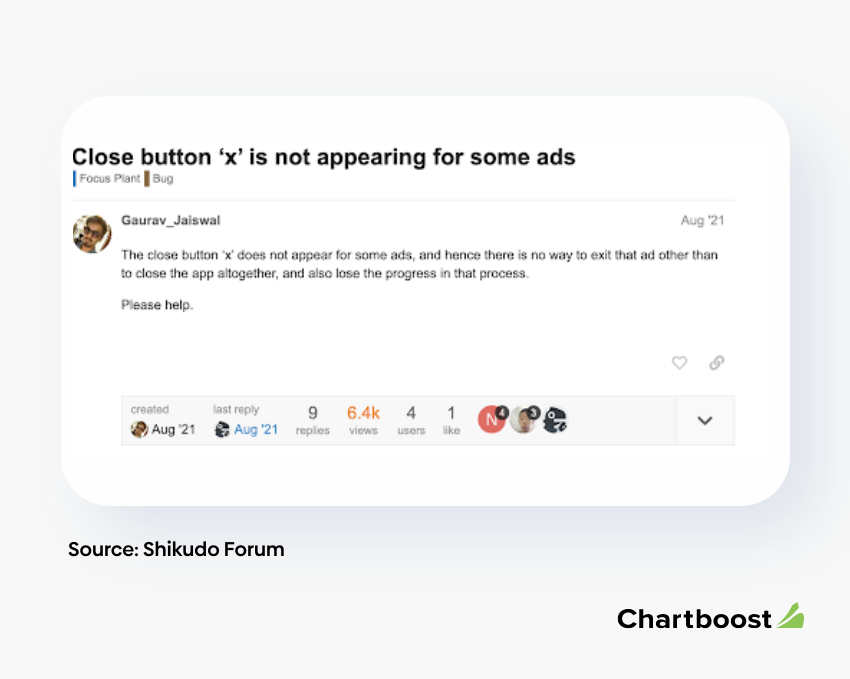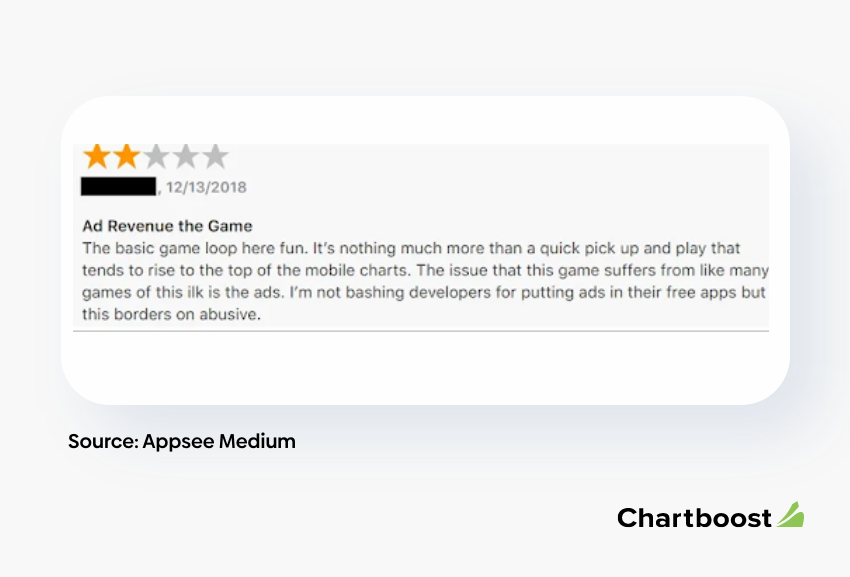If you’ve ever played a mobile game, you’re almost certain to have encountered a bad ad or two. Maybe you were simply trying to unwind during your commute home. Instead, you were rudely interrupted by a video ad that not only paused your game but lacked any discernible way to close it. And before you could escape, you accidentally tapped that ad and ended up on some other screen. Or maybe it was an interactive end-card or playable ad (with an X button that moved around or disappeared altogether) repeatedly popping up and redirecting you to an app store.
The frustration doesn’t end there. It’s only a matter of time before another ad pops up to wreck your game session again. It’s enough to make you scream. So much for unwinding.

The negative impact of bad ad experiences can be far-reaching, from creating friction within a game to tanking player retention. Many players abandon games altogether because of intrusive ads. Some leave bad reviews despite otherwise enjoying the game.
It’s an all-too-common occurrence in mobile gaming.

The evolution of mobile game ad monetization: From foe to friend
Several years ago, monetization through in-app advertising (IAA) faced great resistance from leading mobile game publishers in favor of in-app purchases (IAP). The fear was IAA would do irreparable harm to the game experience and player retention.
Relying solely on IAP worked in the early days of mobile gaming. Long before the introduction of Android’s Privacy Sandbox and Apple’s App Tracking Transparency, self-attributing ad networks like Facebook allowed user-level IAP sharing, which facilitated hyper-targeting through data-driven lookalike audiences, and AEO/VO campaigns. Publishers leveraged this data to acquire high-quality, high-LTV users to maintain a steady stream of revenue.
However, the landscape has changed. User acquisition strategies have evolved to the point that IAA has become critical. Today, just about every game developer and publisher utilizes IAA while balancing game experience, retention, and ad revenues.
It’s time to have a frank discussion about the challenges and opportunities presented by the evolution of mobile game ad monetization.
Striking the right balance: The publisher’s perspective on mobile game ad quality
User acquisition and retention over the long term is paramount for publishers. The best game businesses constantly attempt to strike a delicate balance between game experience, retention, and ad revenues.
Good ad tech, therefore, should address the underlying issues that lead to bad ad experiences. It must provide the right data to developers and publishers so they can deliver high-quality ads that are tailored to their audience’s interests and preferences, minimizing any negative impact to the user experience.
Ultimately, achieving this balance is crucial to the success of the mobile game industry.
So what does “great” look like?
It starts with access to and transparency of the critical data monetization teams need to drive success. This includes ad domain data that shows which advertisers are buying ad inventory, whether they are performance buyers or brand buyers, who is being charged, and how much they are being charged. Publishers should also have clear and transparent access to a variety of demand sources and full control over their ad inventory.
In addition to data transparency, ad templates (the rendered ads) need to be clear, high-performing, and user-friendly. Publishers need data that can identify and segment users who experience bad ads to understand why these ads drive churn. This means understanding which ads and what sources lead users to close the game and never come back.
Removing opaqueness from the ecosystem by sharing all available data with publishers empowers informed decisions. They can reliably tell which demand sources and advertisers are correlated with declines in retention and take action accordingly. Ultimately, transparency and data are key to striking the right balance between game experience, retention, and ad revenues.
The tools and techniques for better ad monetization
To strike the right balance between ad revenues and retention, publishers need:
- Transparent data that allows their monetization teams to monitor, identify, and isolate bad ad experiences
- The tools to act upon the data to maximize game revenues
We’ve discussed the data side, but what about the tools and controls to act on it?
When publishers are given full control over their ad monetization stack, they can continuously identify instances of bad ad experiences, understand which channels and advertisers are driving these experiences, and analyze the impact on the game’s business, including churn, retention, engagement, and revenues.
Moreover, these issues can be identified at the user level, connecting the player that is exposed to the bad ad experience to the impact it has on their behavior and revenues. Publishers can then ensure the bad experience isn’t repeated for that user by killing the bad channel or the specific advertising from reaching them before they lose patience and abandon the game altogether.
Conclusion: Striving for balance
Chartboost and Zynga are building an advertising, monetization, and mediation platform that puts the game developer and publisher first. Our tools grant the access and transparency you need to see and act upon your most critical data, just like the world’s largest game companies.
Take the next step toward creating your fantastic game business that entertains the world. Stay tuned for more updates about our platform or chat with us to learn more today.
For more on this subject with leaders from Take-Two, Zynga, Rollic, Mavens, and Chartboost, check out our GDC week talk A New Era Dawns: Mobile Gaming Needs Transparent Ad Tech.



